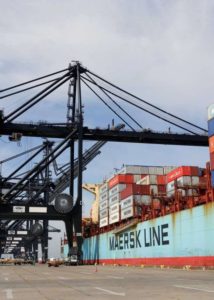A consolidated shipment is created by consolidating numerous LTL shipments from different carriers into a single full container (multi-stop truckload) cargo. Consolidated Shipping allows shippers to gain preferential rates while optimizing supply chain operations by saving time and money.
 FCL vs LCL:
FCL vs LCL:
- Less than container load (LCL), sometimes known as less than truckload (LTL), is a shipment that is too tiny in bulk to require a full container to convey. These shipments are priced on a volume basis and are consolidated to fit into entire containers. LCL shipments are rather typical in supply chains.
- The alternative is full container load (FCL) when a shipment has enough bulk to warrant shipping a full container. This sort of transportation is often priced per container. Unlike LCL shipments, FCL shipments are loaded and sealed by the supplier or manufacturer at the origin.
Consolidated shipping is ideal for those who require a few pallets of freight or smaller shipments packed and sent in a single container. Shipments will frequently arrive from many places and sources, and shippers will consolidate them into a single cargo to avoid paying a higher charge.
We wanted to bring clarity around the phrase and its link with the freight sector to assist explain down consolidated shipping and why it’s so crucial. To that end, we’ve listed some of the advantages and disadvantages.
Benefits of Consolidate Shipping:
Cost-Effective:
Many shippers feel that the actual benefit of consolidation is cost savings. Even if you utilize half or two-thirds of a trailer, you will usually be charged for the complete area. Consolidate shipping allows you to combine numerous LTL shipments moving in the same place into a single full truckload cargo while only paying for the space that their freight occupies.
Lowers damage risk:
Despite all the advances in freight shipping, damaged freight remains a problem. Consolidated shipping employs a strategy that saves money and lowers on-again and off-again product handling. It is because cargo only needs to travel between the shipper, consolidation center, and receiver/consignee. The danger of damaged items is significantly reduced with fewer touchpoints.
Enhanced quality control:
Another advantage of consolidation is that you may get control of your items sooner. If quality control notifies you of a problem with your shipment after it has already been dispatched, you would generally have to wait for the supplier to provide a replacement, implying that the schedule for delivering the product is now out of your hands. Consolidation enables you to undertake quality control steps before the product arrives at the warehouse, reducing the likelihood of losing time and control due to unanticipated difficulties with your order.
Enhance Customer Satisfaction:
Having pleased consumers is an advantage in and of itself. They may adore your items, but if you can’t regularly send shipments to merchants on schedule or keep up with their demand, you may risk your relationship with your client,
Freight consolidation allows you to deliver your product to customers faster and more efficiently. It is especially true if you send inventory to the consolidation facility ahead of time. When an order comes in, your partner will ship the product directly from the center rather than coming to your firm to pick it up. It helps you keep ahead of demand and meet your customer’s requirements.
Enhanced Consistency:
Once you understand your consumers’ ordering patterns, you can include them in your consolidation strategy. It helps you have the product on hand for your consumers rather than racing to meet requests. Having a consistent shipment schedule will also allow you to better take advantage of the discounts that freight consolidation offers, as it will assist guarantee you have enough capacity.
When you improve the consistency of your supply chain, you reduce the chances of having a late shipment, missing merchandise, or a freight sent to the incorrect store. It will simplify your whole shipping procedure and keep your consumers happy.
Enhance your customer and carrier relationships:
You will be able to create partnerships with other organizations, clients, and carriers if you ship intelligently and more effectively.
Firstly, you may build partnerships with other firms that rely on LTL shipping. When you discover that another company ships a comparable product or a similarly-sized load on the exact timetable to the same retailer, you may form a shipping relationship helping you save money and construct better cargoes.
Customers will appreciate that you’ve collaborated to develop a more effective shipping system to bring them things since they deal with both firms. They will also enjoy the cost reductions provided by freight consolidation.
Working with the proper carriers will make it all possible. You want a business you can trust to manage your orders and ensure that things arrive on time. Your products may have unique requirements that your carrier must meet, and having a connection in place will not provide you any guarantee that everything will be alright. Consistent relations with your shipper might also lead to better future pricing.
Enhanced Flexibility and Time Management:
Using freight consolidation will also increase the flexibility of your transportation demands and the timeliness of your orders. Freight consolidation frequently provides shorter travel times while lowering wait times for small shipments.
Having your freight kept in a consolidation facility ensures that your items are ready to transport when needed. It increases your timetable and inventory flexibility, which your clients will enjoy if they need to adjust something. Order changes might cause havoc with alternative shipping methods, but having your freight consolidated will not affect your ability to send your items to your clients on time.
Consolidate Shipping Challenges:
 Finding a carrier:
Finding a carrier:
Because of the additional complexity of consolidation, not all carriers are willing to transport combined cargo. Even if you successfully locate a shipper ready and able to carry aggregated freight, ensure that you are thoroughly aware of this carrier and that you are being charged correctly. Partnering with an online freight service provider will help assure that you obtain fair pricing when picking the correct shipper and accessing the carrier network.
More time spent in preparing:
While not always a terrible aspect, consolidated shipping necessitates more time spent arranging and planning. To ensure that delivery comes securely and on time, be extra cautious and aware of the cost, size, scheduling, etc.
Time consumption:
Consolidated shipments can (and usually do) take longer than other FTL shipping options due to the necessity for additional steps in the process (consolidation and deconsolidation). Shippers must be informed of the procedure before organizing a combined shipment.
Service Options for Consolidation:
Air:
Shipments from numerous shippers share space on an airplane using this strategy. The same master waybill is used for all shipments. However, each cargo has its own waybill. This mechanism organizes freight. Air Freight consolidation is fast and will bring your product to its destination as soon as feasible. The expense of sending combined cargo by air is one disadvantage. Moving freight via air is often the most expensive transportation method.
Ocean:
Ocean freight is ideal for transporting huge items. Ocean freight is often delivered in containers of various sizes (20ft broad, 40ft wide, or 40ft tall), and LCL goods are distributed into these containers. Shipping by the ocean is less expensive than shipping by air and is an excellent technique for international shipping.
Ground:
LCL shipments are commonly referred to as LTL shipments for this strategy. Because these shipments are insufficient to fill a truckload on their own, they are combined with other shipments to form a complete truckload. Ground shipment is the cheapest option, but it is the slowest and most prone to delays.
Is Consolidated Shipping Good for Me?
Consolidated ground shipment is a low-cost (cost-effective) and efficient technique to transfer freight. This strategy is perfect for people who move palletized freight. One of the considerations for palletized shipment is that it travels smoothly over the pier. Clearing a customer’s dock makes the distribution facility more orderly and productive.
The shared truckload solution from Custom Crating and Logistics provides all of the benefits of freight consolidation. Custom Crating and Logistics provides consumers with rapid, safe, and environmentally responsible freight delivery using cutting-edge technology and freight pooling.






